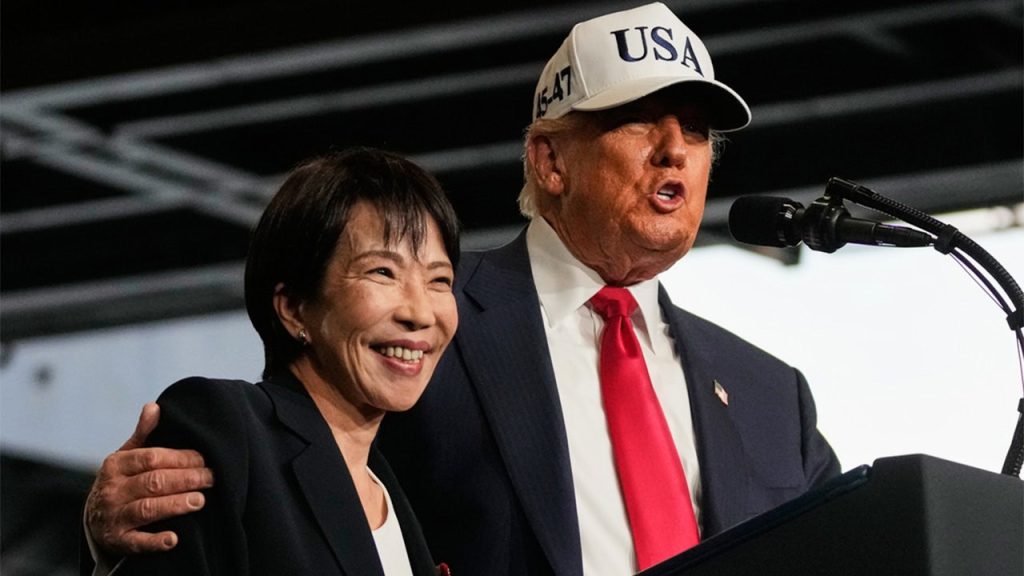Trump’s Asian Diplomacy Tour Highlights Strengthening U.S.-Japan Alliance
President Donald Trump’s ongoing Asia tour brought him to Japan’s Yokosuka Naval Base on Tuesday, where he delivered an hour-long address to U.S. troops aboard the USS George Washington. In a significant announcement regarding defense cooperation, Trump revealed that “the first batch of missiles for Japan’s F-35 fighter jets will arrive this week,” suggesting an acceleration of previously scheduled U.S. defense deliveries to Tokyo. This development comes as part of Washington’s approved arms sales to Japan, which include sophisticated AIM-120 AMRAAM and AIM-9X air-to-air missiles specifically designed for F-35 fighter jets. The timing of this announcement is particularly noteworthy as it demonstrates the tangible military cooperation between the two nations amid growing regional tensions with China and North Korea.
The President’s Japan visit represents a crucial diplomatic engagement in his broader Asian tour, which began with a stop in Malaysia before arriving in Tokyo. While in Japan, Trump met with the country’s recently appointed Prime Minister Sanae Takaichi—Japan’s first female prime minister—marking a historic moment in U.S.-Japan relations. During their meeting, the two leaders signed a new framework agreement focused on rare earth minerals, a strategic resource category that has become increasingly important in global technology supply chains and one where China has maintained significant market dominance. This agreement signals both countries’ interest in developing alternative supply sources for these critical materials, reducing dependence on Chinese exports. The diplomatic engagements in Japan serve as a prelude to what many observers consider the most consequential meeting of Trump’s trip: his upcoming talks with Chinese President Xi Jinping later this week.
Standing together on stage at the naval base, both Trump and Prime Minister Takaichi emphasized the strength and importance of the U.S.-Japan alliance. Trump characterized it as “one of the most remarkable relationships in the entire world,” highlighting the deep historical, economic, and security ties between the two nations. This rhetorical flourish underscores the continuing centrality of the U.S.-Japan alliance to America’s Indo-Pacific strategy, regardless of shifting domestic politics in either country. For her part, Prime Minister Takaichi declared that Japan was “committed to fundamentally reinforcing its defense capability” and stood “ready to contribute even more proactively to peace and stability in the region.” These statements reflect Japan’s evolving security posture under recent administrations, which has seen the country gradually expand its military capabilities and regional security role while maintaining its crucial alliance with the United States.
Beyond security matters, Trump took the opportunity to highlight economic achievements, pointing to record highs in both Japanese and American stock markets as evidence that “we’re doing something right.” This economic focus reflects the Trump administration’s consistent emphasis on market performance as a barometer of policy success, while also acknowledging the deeply intertwined nature of the U.S. and Japanese economies. The economic dimension of U.S.-Japan relations remains vital, with bilateral trade and investment creating millions of jobs in both countries. The President’s remarks suggest an intention to continue promoting economic cooperation alongside the security relationship, recognizing that a strong economic partnership undergirds the broader alliance.
The backdrop of Trump’s visit to Japan—a U.S. naval base hosting thousands of American service members—visibly symbolizes the enduring military alliance between the two countries. Yokosuka Naval Base represents the largest U.S. naval installation in the western Pacific and serves as the home port for the U.S. Seventh Fleet, a critical component of America’s forward-deployed military presence in the region. By choosing this venue for his address, Trump placed America’s military commitment to Japan and the broader Indo-Pacific region front and center. The presence of the USS George Washington, a Nimitz-class nuclear-powered aircraft carrier named after America’s first president, further reinforced the historical depth and continuing relevance of U.S. power projection capabilities in Asia, especially at a time when China’s naval expansion has raised concerns among regional allies.
As Trump continues his Asian diplomatic tour, regional security dynamics loom large over his agenda. His repeated invitations to meet with North Korean leader Kim Jong Un, though not yet resulting in concrete preparations, signal a continued interest in diplomatic engagement with Pyongyang despite persistent tensions over North Korea’s nuclear and missile programs. However, the upcoming meeting with Chinese President Xi Jinping is widely viewed as the most significant diplomatic event of the trip, particularly given the complex and often contentious U.S.-China relationship spanning trade disputes, technological competition, human rights concerns, and geopolitical rivalries. Against this backdrop, Trump’s strengthening of ties with Japan—China’s historical regional rival and America’s closest Asian ally—takes on additional strategic significance, potentially providing Washington with greater leverage in its dealings with Beijing while reassuring Tokyo of America’s continuing commitment to regional security in an increasingly uncertain geopolitical landscape.


